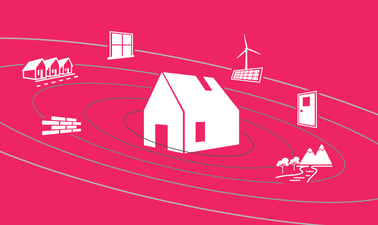6 weeks
3–5 hours per week
Self-paced
Progress at your own speed
Free
Optional upgrade available
There is one session available:
17,069 already enrolled! After a course session ends, it will be archivedOpens in a new tab.
Starts Nov 8
Circular Economy for a Sustainable Built Environment
At a glance
- Institution: DelftX
- Subject: Architecture
- Level: Intermediate
- Prerequisites:
The course will be of interest and value to students and working professionals in the fields of architecture, urbanism, and building/infrastructure engineering.
The course builds upon basic knowledge of architectural and urban design and engineering, as well as general knowledge of Circular Economy theory. For background information we recommend you follow the courses:
“Circular Economy: An Introduction” and/or “Engineering Design for a Circular Economy”, also on EdX.org
- Language: English
- Video Transcript: English
- Associated skills:Greenhouse Gas, Energy Consumption, Supply Chain, Built Environment, Business Modeling, Urban Design, Green Building, Economy, Regional Development
Who can take this course?
Unfortunately, learners residing in one or more of the following countries or regions will not be able to register for this course: Iran, Cuba and the Crimea region of Ukraine. While edX has sought licenses from the U.S. Office of Foreign Assets Control (OFAC) to offer our courses to learners in these countries and regions, the licenses we have received are not broad enough to allow us to offer this course in all locations. edX truly regrets that U.S. sanctions prevent us from offering all of our courses to everyone, no matter where they live.Interested in this course for your business or team?
Train your employees in the most in-demand topics, with edX For Business.


